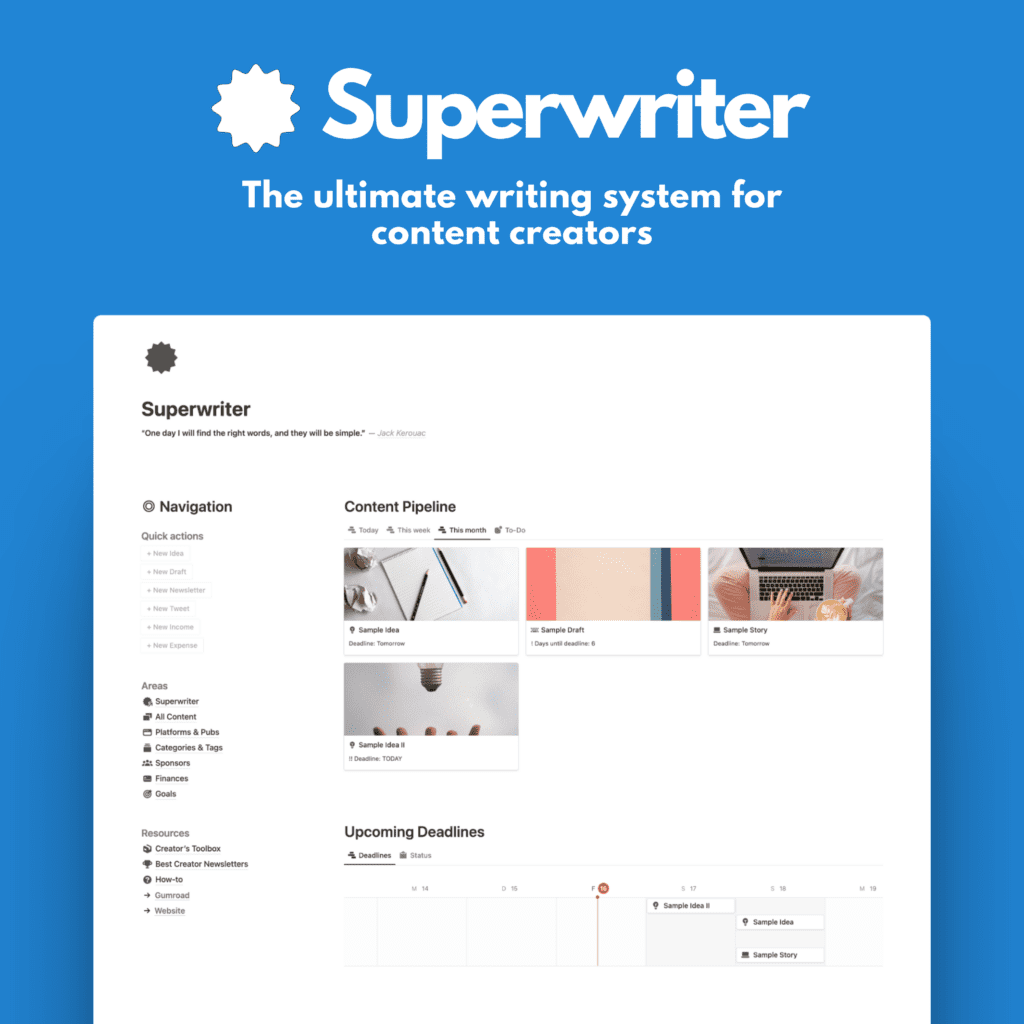Ah, good ol’ blogging.
It’s not dead. Blogs are thriving. There are over 600 million blogs online in 2024. Since 2015 this number has grown by 12%.
And over 6 million posts get published every day.
Blogging is an insane internet success. It’s never too late to get going. Even now in the day and age of AI writing tools, true human writing is booming more than ever.
But what’s the best blogging platform in 2024? What’s your best bet? What’s the most future-proof platform to house your words this year and beyond.
Let’s find out!
And hint: One of these platforms is powering 60 million blogs worldwide alone and 43% of the website online in total.
What makes a good blogging platform
When you want to start blogging online, it’s crucial to know what you need. Thousands of tools can help you create a blog. But only a few will have everything that you want or require for your blogging style.
First, one of the main concerns for most beginner bloggers is pricing. So, they usually look for free (or affordable) options.
Then, there’s the complexity and feature-set. Should it be a simple, minimal tool that focuses on writing or a complex, high-level tool that offers every little feature you might need for writing, SEO, tagging, connections, integrations, and more.
Finally, there’s an aspect of brand identity and prestige. The platform should be well-set, liquid, legally straight, and well-known.
With that out of the way, let’s get into my top 10 blogging options.
#10 Blogger
Free and paid

Blogger is Google’s own blogging system that many have heard about or tried. It’s a rather simple tool that includes the basics for free with a blogspot subdomain.
It’s not a bad product. You can add some light customizations, but overall, Blogger is somewhat a thing of the past. There are better platforms out there, 2024.
Still, for some people in the Google universe who want free blogging without advanced features, it’s an option.
#9 Write.as
Free and paid

One of the simplest and easiest solution to quickly get into writing on the internet with your own blog is write.as.
It’s a straightforward, easy-to-use, minimal writing platform that offers a free plan on their subdomain, as well as two paid plans starting from $9 per month, including features like custom domain support, SSL, and up to 500 newsletter subscribers.
Write.as is ideal for beginners that want to write and see where it takes them.
#8 Svbtle
Paid

Much like write.as, Svbtle is a sleek, minimal publishing platform that focuses on words without any BS around.
It’s super simple and one of the best-looking tools on the market. It’s been online for quite some time and offers a Forever Promise.
Svbtle has Markdown support, which I always appreciate. The editor serves basic functionality, sort of like Medium’s with media embeds, code blocks, and even raw HTML.
It has some light SEO capabilities and offers custom domain support. And that’s mostly it.
Svbtle has a 7-day trial, then it costs $7 a month for everything, no additional plans needed.
Svbtle a great tool for everyone looking for a super easy, stable, minimal writing experience.
#7 Squarespace, Wix, Weebly, etc.
Free and paid

Any good website builder will offer blog functionality. That’s this category. It’s not that important which one of the tools you use, they all have their upsides and downsides.
But they do have blogging capabilities, good feature sets, a solid business model, brand identity, and potential to scale your blog.
I’d recommend Squarespace (not sponsored), because to me, it’s (one of) the most modern and advanced website builders with great themes and options. It does cost a good amount, though.
This category of website builders is best suited for writers who not only want to blog, but require a complex website structure, even some e-commerce features now or in the near future. And who aren’t afraid to pay for that.
#6 Payhip
Free and paid
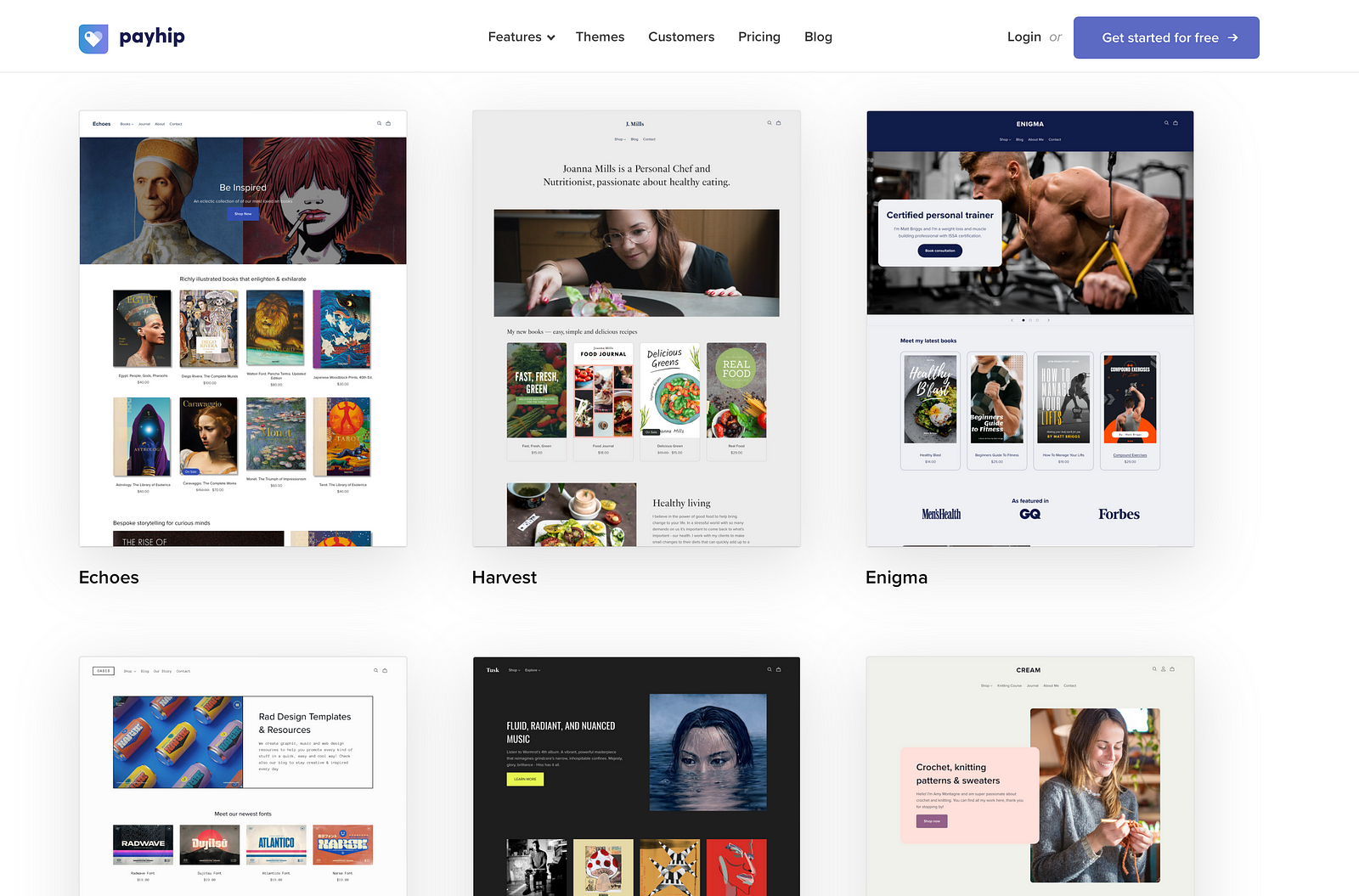
Speaking of e-commerce features, Payhip is a digital product selling tool, like Gumroad. But Payhip (and Gumroad as well for that matter) also offer blogging functionality.
Payhip gives you a nice website builder where you can customize your themes, add sites, navigation, images, testimonials, and a lot more, including custom domain support and a blog section. All for free!
Payhip is very light on SEO features, but the overall experience with the tool, the website builder, and the ecommerce functionality is brilliant.
You can create a website, connect your domain, add a blog, and a store, all for free, in minutes. That’s pretty unique.
Payhip is ideal for bloggers who are already selling or planning on selling digital products soon.
#5 WordPress.com
Free and paid

Of course, WordPress make this list. It’s the OG of blogging platforms, running since 2003.
When I started blogging in 2008, it was basically the only good options available to get a personal blog up and running.
And that hasn’t stopped.
WordPress is without a doubt the most well-known and trusted blogging platform out there. It’s morphed into a complex website builder over the years that can build anything, from blogs, to one-page websites, to ecommerce stores, and everything in between. It has millions of themes, plugins, add-ons, support forums, and help sites. You’ll find anything you need. Often for free.
WordPress is the most scalable and customizable solution on this list. With it, it’s also the most complex and complicated tool here. It starts free with a subdomain and offers various paid plans, from very affordable to somewhat high-priced.
WordPress.com is perfect for people who want to customize everything to a T, need a large plugin and add-on universe, a good community around it, and the most widely-used solution around.
#4 Ghost
Paid
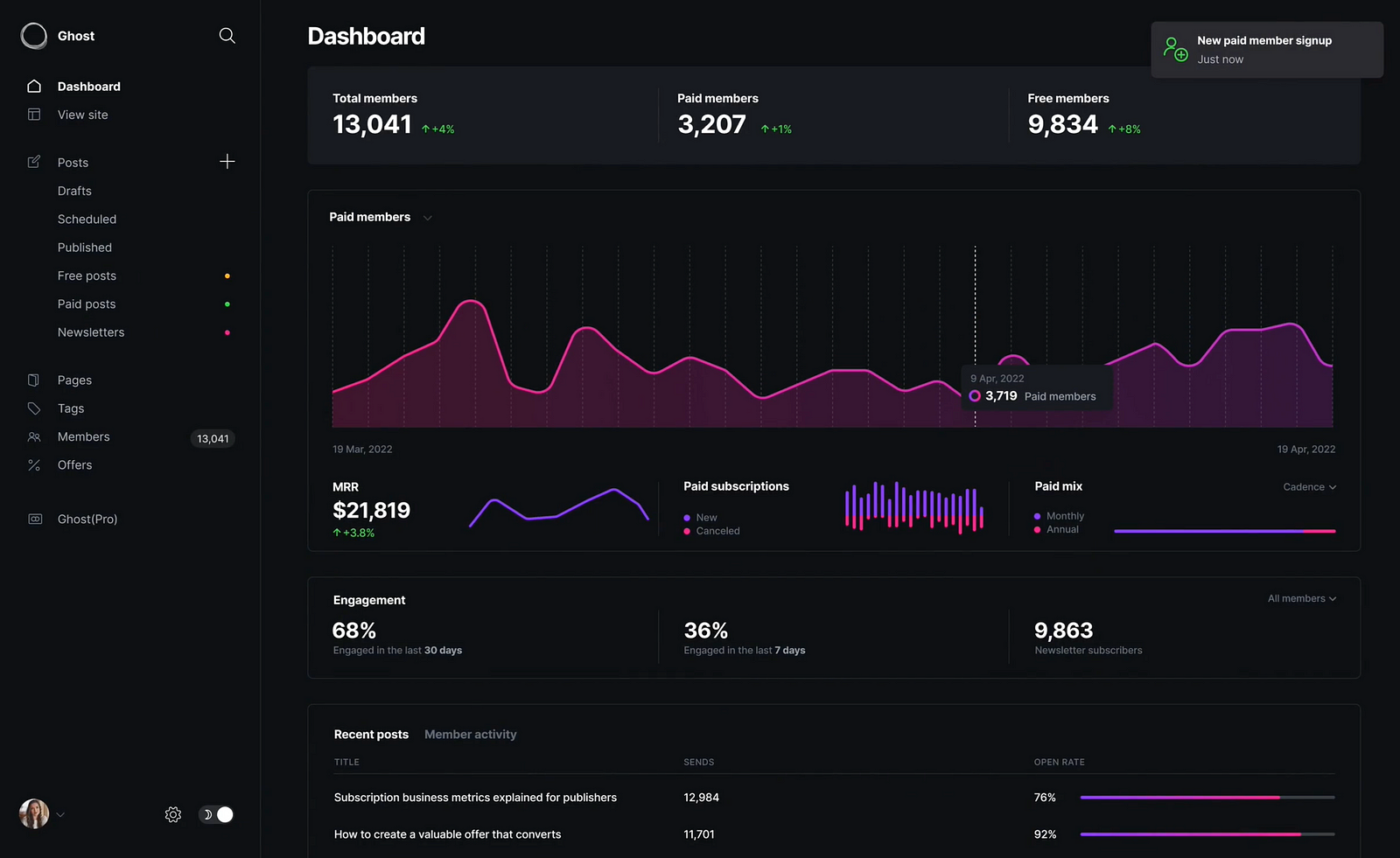
Ghost and WordPress.com are hard rank here. To me, there both exceptional tools. Ghost excels in terms of design and newsletters integration.
WordPress wins in terms of plugins, themes, and support around it.
Ghost is an open-source tool like WordPress. It has most of the features bloggers need, including custom domain support, SEO features, and more.
It has a free version but that’s really only for tech-savy people who know how to handle a server install and more.
The main version of Ghost is paid, and it does have some steep pricing once you get more subscribers. The entry plan is $9 per month for up to 500 subscribers and limited features.
To get the crucial feature, you need the creator plan that starts at $25 a month which is on the pricier side.
Ghost is perfect for people who get overwhelmed by WordPress’ complexity, who want a simple, good-looking tool, that focuses on writing and collecting subscribers that can later be monetized with paid subscriptions.
#3 Substack
Free
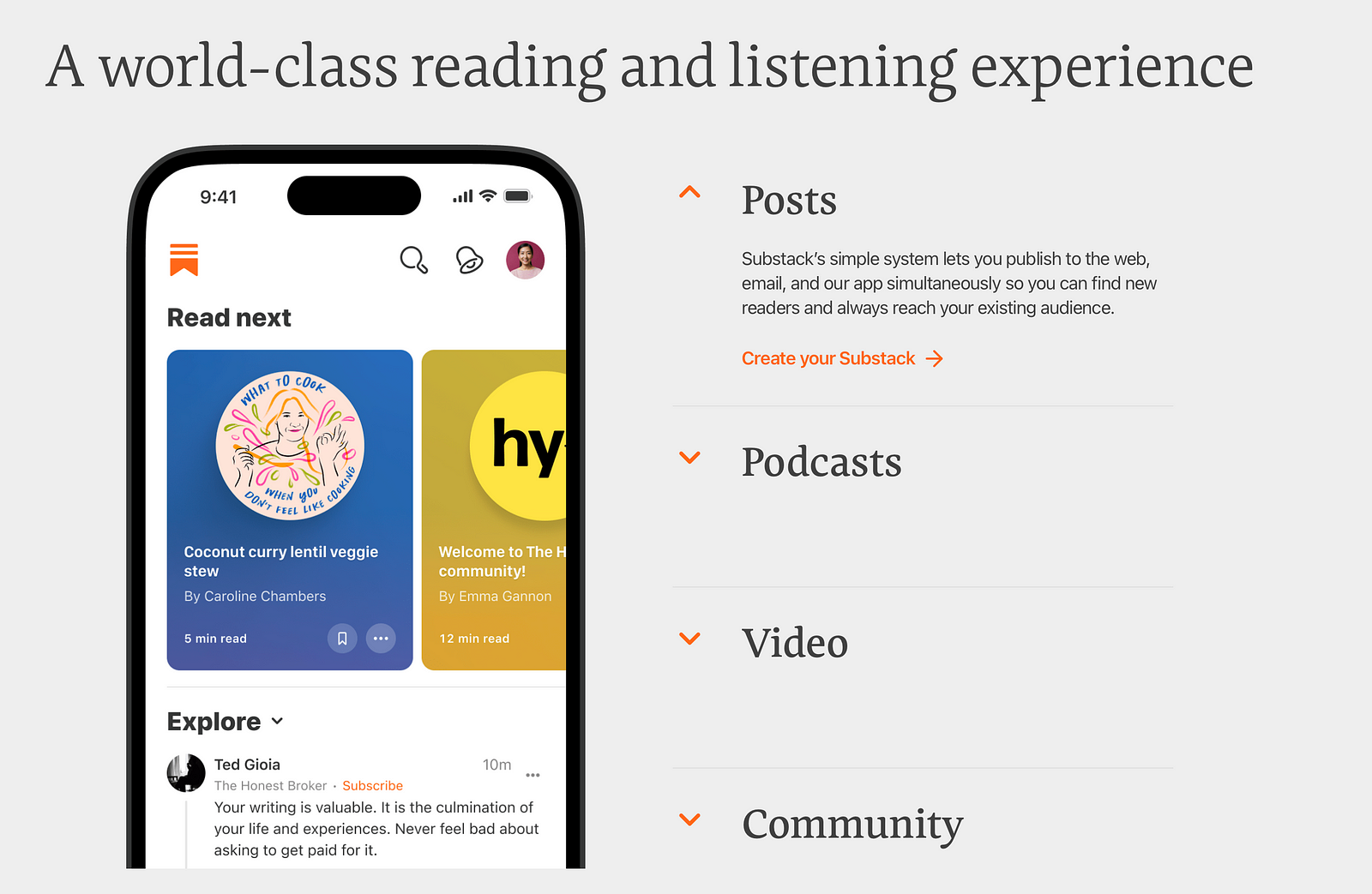
Some might be surprised to see Substack on this list. After all, it’s mainly marketed as a newsletter platform. But to me, it’s one of the leading blogging tools 2024.
Substack is free, the newsletter integration is seamless and powerful, the backend is robust, the editor is great for writing, Substack offers custom domain support, some light SEO functionality, and best of all, has a large audience, a discover feature, and recommendations.
This all means you’re much more likely to be found on Substack than on any of the other platforms above, because Substackers have their own universe where they share and recommend each others writing.
Substack also offer chat, Notes, podcasts, and video. All for free, apart from the 10% cut they take from paid subscriptions you might want to add in the future.
Overall, Substack is ideal for beginner bloggers who want a newsletter with their blog, a large net of connections, and a simple, easy-to-use tool. I’d recommend Substack for every beginner, together with…
#2 Medium
Free and paid

Yes, Medium.
This platform is still the best audience-driven blogging platform you’ll find online. It’S minimal, super easy to use, light on SEO, but has some unique advantages over all the others.
That’s the built-in audience and the direct payment option. You can start writing and get paid immediately from the pool of membership earnings.
Medium also has a high domain authority, offers a subscribers feature, has many great publications, and thousands of interested readers.
Medium is the ideal platform for any blogger. Period! Even if you want to run your main blog on another platform like WordPress or Ghost, you should always consider reposting your content to Medium as well, and benefit from the built-in audience.
#1 WordPress.org
Free
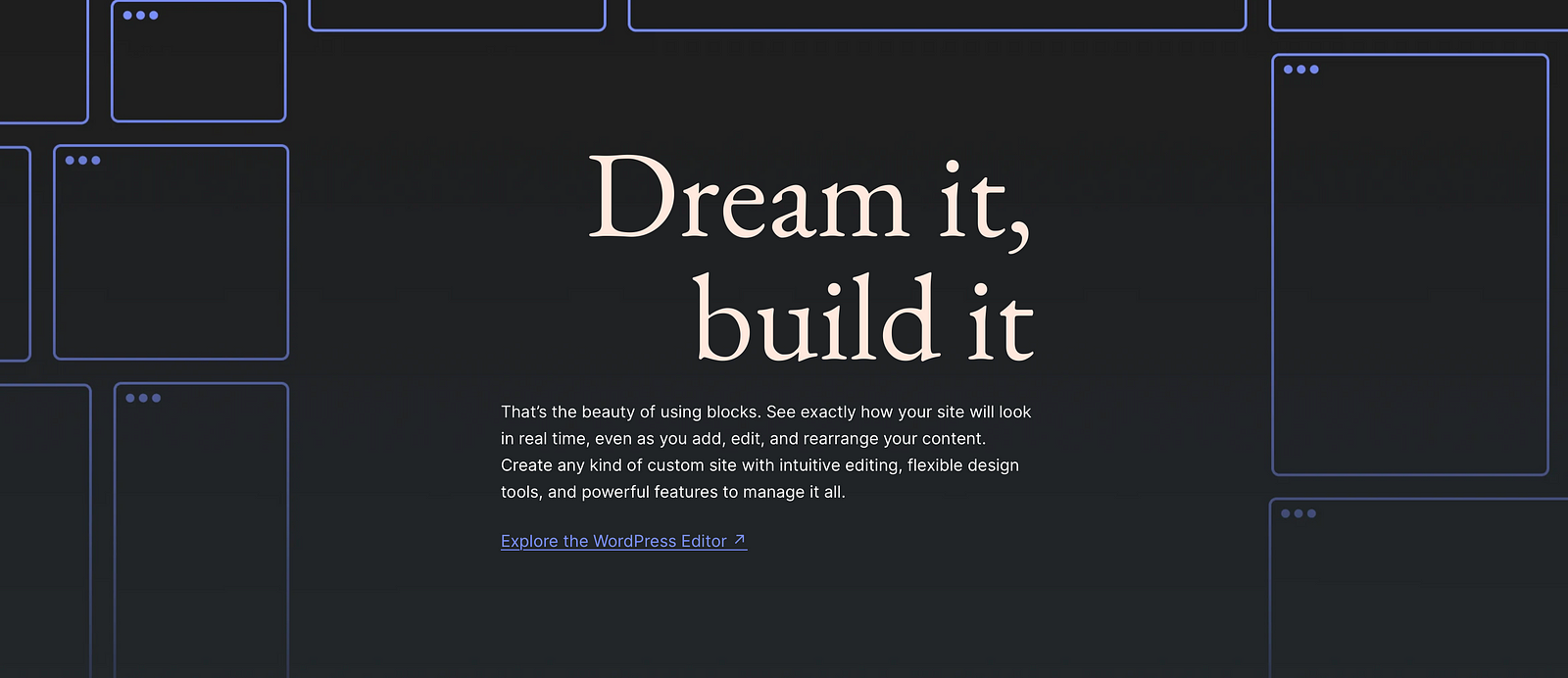
The no-brainer number 1 for me is the open-source, self-hosted, free version of WordPress.
WordPress.org has all the benefits of WordPress.com but is entirely free to use. It requires some more technical knowledge to get it up and running, but most website hosting companies offer one-click installs for WordPress.org, making it pretty easy to install.
WordPress also has the largest catalog of help articles, forums, and dedicated blogs to help you with every step of the way.
It also has the largest universe of free and paid themes, designs, plugins and add-ons.
It powers 43% of websites and over 60 million blogs.
You can build everything with WordPress, from blogs, to link lading pages, to one-page designs, to portfolios, and storefronts.
It’s mega complex, yet relatively simple to use. Again,
you’ll find answers to any problem you might encounter on the countless help forums and websites.
WordPress is ideal for bloggers who want a scalable, free solution for everything. If you’re willing to learn it, it’s the number 1 solution out there.
The bottom line
These are my picks for the top 10 blogging platforms 2024. As you have seen, it’s a complex mix of free and paid tools with different feature sets and focuses.
You’re good to go with any of the above, although I would recommend to pick a tool from the top 5, as the offer unique benefits that the others don’t,
Overall, I would suggest to start today, and do it on two platforms. One open-source tool like WordPress or Ghost, and one audience-driven tool like Substack or Medium.
That way, you will have the best fundation to make your blog big.







